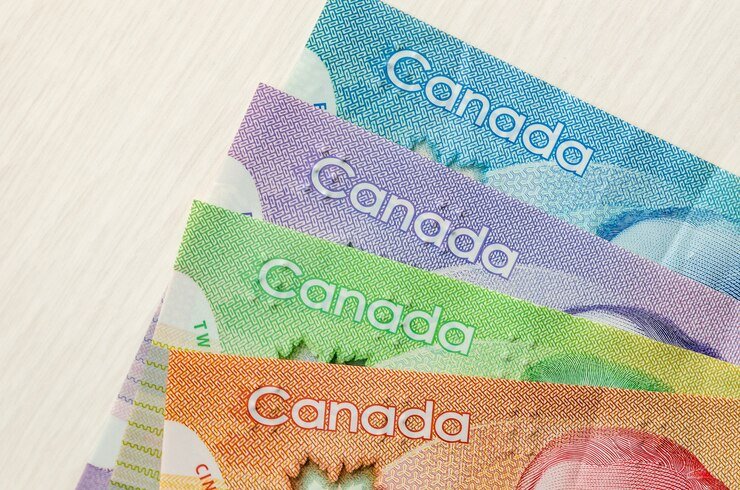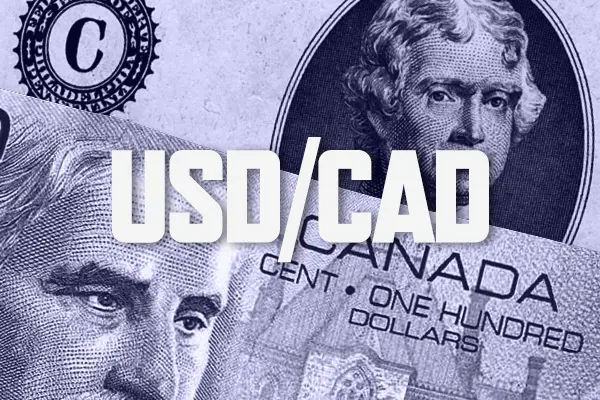USD/CAD Forecast: Bearish Momentum Grows Pre-Employment of Canadian CPI Inflation Data
USD/CAD is trading close to 1.4205 in early European trading, with a bearish bias pre-employment of Canada’s CPI inflation data publication. The pair is still under pressure below the 100-period EMA, with the RSI indicator continuing to signal bearish momentum. The initial key support level stands at 1.4151, with additional downside potential to 1.4130 and the psychological 1.4100 level. On the positive side, near-term resistance is at 1.4265, with a possible breakout to 1.4310 and 1.4380. Focus remains on Canada’s inflation reading, due to increase 1.8% YoY, which may affect USD/CAD’s next direction. KEY LOOKOUTS • January inflation report, due at 1.8% YoY, will be a determining factor affecting USD/CAD’s next direction and market mood. • The initial resistance at 1.4265, then 1.4310 and 1.4380, may decide whether USD/CAD makes a bullish reversal. • Important downside levels at 1.4151, 1.4130, and 1.4100 will play a pivotal role in determining whether bear pressure becomes more intense in the short term. • A stronger U.S. dollar would cap downside action, while risk sentiment and economic data releases will influence near-term USD/CAD price action. USD/CAD is also in the limelight as traders wait for Canada’s CPI inflation data, expected to increase 1.8% YoY in January. With the pair hovering around 1.4205, the technicals favor a bearish bias since it is still below the 100-period EMA and the RSI is hovering around 46.25. The key downside levels to keep an eye on are 1.4151, followed by 1.4130 and the psychological level of 1.4100. On the positive side, a break above 1.4265 can drive the pair towards 1.4310 and 1.4380. The sentiment of the market and the strength of the U.S. dollar will determine the direction of the next move in USD/CAD. The USD/CAD currency pair quotes around 1.4205 with a bearish bias prior to Canada’s CPI inflation, due out at 1.8% YoY. Important support areas are at 1.4151 and 1.4100, whereas resistance at 1.4265 may dictate further upside potential. Market sentiment and the strength of the U.S. dollar will dictate the next direction of the pair. • USD/CAD is still in pressure below the 100-period EMA, with the RSI at 46.25 showing continuous downside momentum. • Inflation is forecasted to increase by 1.8% YoY in January, impacting sentiment and possible price action in USD/CAD. • Support appears at 1.4151, with deeper potential downside toward 1.4130 and the psychological area of 1.4100. • Resistance is at 1.4265, a breakout potentially pushing the pair through to 1.4310 and 1.4380. • The performance of the Greenback, along with risk mood, will play the key role in deciding whether USD/CAD goes on losing further or corrects. • The pair is moving below the 100-period EMA, while the Bollinger Bands also indicate greater near-term selling pressure. • Buyers and sellers would keep a sharp eye on Canadian CPI releases as well as wider market dynamics because volatility could inject steep price actions in USD/CAD. The USD/CAD currency pair is still under bearish pressure, trading below the 100-period Exponential Moving Average (EMA), which is a fundamental indicator of negative momentum. The Relative Strength Index (RSI) at 46.25 also supports the negative bias, indicating sellers are still in command as long as it remains below the midline. The Bollinger Bands show rising volatility, with the price approaching the lower band, which is a sign of possible further falls. The initial important support level is 1.4151, which a breakdown below may further speed up selling down to 1.4130 and the psychological support of 1.4100. The levels will play a determining factor in ascertaining whether the bearish trend continues. USD/CAD Daily Price Chart TradingView Prepared by ELLYANA On the other hand, on the resistance, the initial important barrier is at 1.4265, which coincides with the top Bollinger Band. A decisive breakout above this level may drive the pair to 1.4310, which coincides with the 100-period EMA. In case buyers can sustain momentum beyond here, more upside potential is available towards 1.4380, the February 10 high. As long as the price is below key resistance points and the RSI is unable to break above 50, the downside bias continues to prevail. Market participants will be paying close attention to Canadian CPI releases and overall risk sentiment, as these underlying drivers may cause tremendous volatility and determine USD/CAD’s next direction. TECHNICAL ANALYSIS USD/CAD is still bearish, with the pair below the 100-period Exponential Moving Average (EMA), which confirms bearish momentum. The Relative Strength Index (RSI) is around 46.25, which is biased towards sellers as long as it remains below the midline. The initial major support is at 1.4151, a fall below which may open up further losses towards 1.4130 and the psychological level of 1.4100. On the higher side, resistance is encountered at 1.4265, coinciding with the top Bollinger Band, with additional obstacles at 1.4310 and 1.4380. A clear break above these levels may change direction towards a reversal to the upside, but presently, the technical indicators are biased towards a further downtrend. FORECAST USD/CAD has some space for upward correction if important resistance levels are broken. The initial resistance level to monitor is 1.4265, which coincides with the top of the Bollinger Band. A breakout above this level could propel the pair to 1.4310, where the 100-period EMA is the next important barrier. If bullish sentiment gains strength, a prolonged rally may aim at 1.4380, the February 10 high. Favorable U.S. economic news or disappointing Canadian CPI inflation data may provide the impetus for a break higher, pushing fresh interest into the U.S. dollar. Moreover, if risk appetite tips in favor of safe-haven assets, USD appreciation may sustain an upside breakout. On the negative side, bearish momentum is still in control as long as the pair is below the 100-period EMA and the RSI is below 50. The initial important support is at 1.4151, the February 14 low, and a break below this level can pick up selling pressure. The next target on the downside is 1.4130, close to the lower edge of






